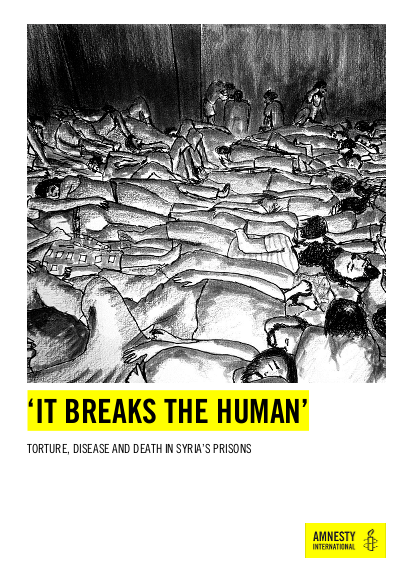
Torture and other ill-treatment have been perpetrated by the Syrian intelligence services and other state forces for decades, fostered by a culture of impunity that is reinforced by Syrian legislation. However, since the current crisis in Syria began in 2011, the situation has become catastrophic, with torture committed on a massive scale.
The Syrian authorities have attempted to keep information about what is going on inside their detention facilities secret. They have refused access to human rights monitors and – both in the media and in international forums such as the UN Security Council – deny that violations take place despite overwhelming evidence to the contrary.
Monitoring bodies, such as the UN-mandated Independent International Commission of Inquiry for the Syrian Arab Republic (UN Commission of Inquiry), have collected sufficient evidence to estimate that “tens of thousands of people are detained by the Syrian government at any given time” and to show that torture and other ill-treatment are a routine occurrence in government detention facilities. Their evidence, which is corroborated by Amnesty International’s research, includes testimony from former detainees and families of detainees; it also relies on civilians and military personnel who previously worked in detention facilities, courts and state-operated hospitals and who have, after escaping the country, provided credible evidence to complete the gruesome picture of the reality for Syrian detainees.
These widespread abuses in detention are taking place in a context in which Syria’s human rights situation, in general, has deteriorated disastrously following the brutal repression of peaceful protests calling for political change in March 2011. Following the evolution of the situation into an internal armed conflict by mid-2012, civilians have been caught in the middle as Syrian government forces and non-state armed groups violate the laws of war. At the current time, no justice is in sight for the overwhelming majority of those whose rights have been violated.
This report focuses on the experience of 65 torture survivors interviewed by Amnesty International. It charts their journeys through what many, such as the UN Commission of Inquiry, consider to be Syria’s most lethal detention facilities, including the detention centres operated by Syria’s four intelligence services – Air Force Intelligence, Military Intelligence, Political Security and General Intelligence – and Saydnaya (also spelt Sednaya) Military Prison. In doing so, it reveals the changing patterns of torture and other ill-treatment that detainees face through the phases of arrest, interrogation by intelligence services and imprisonment. It also shows the challenges faced by those who survive the ordeal following release.